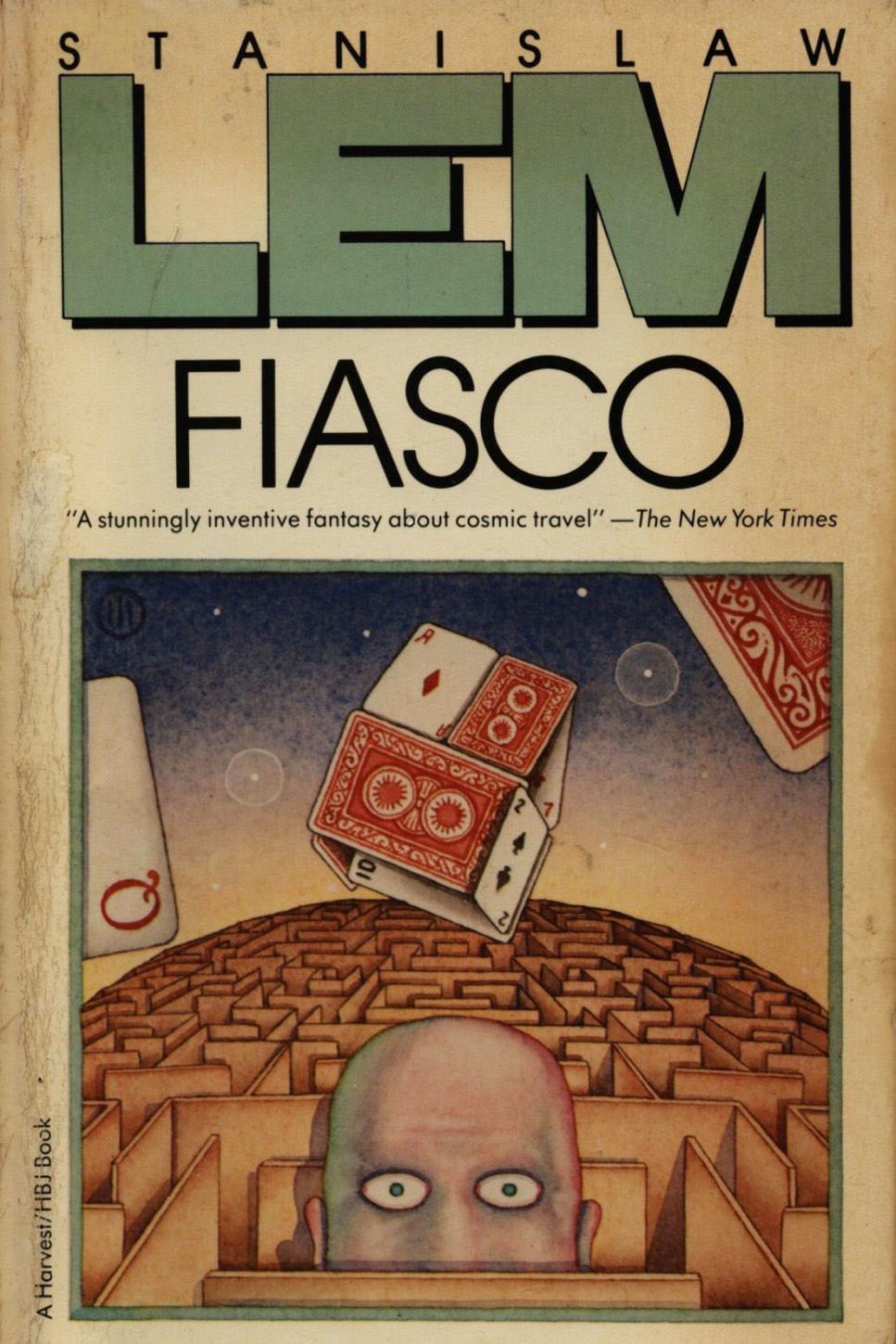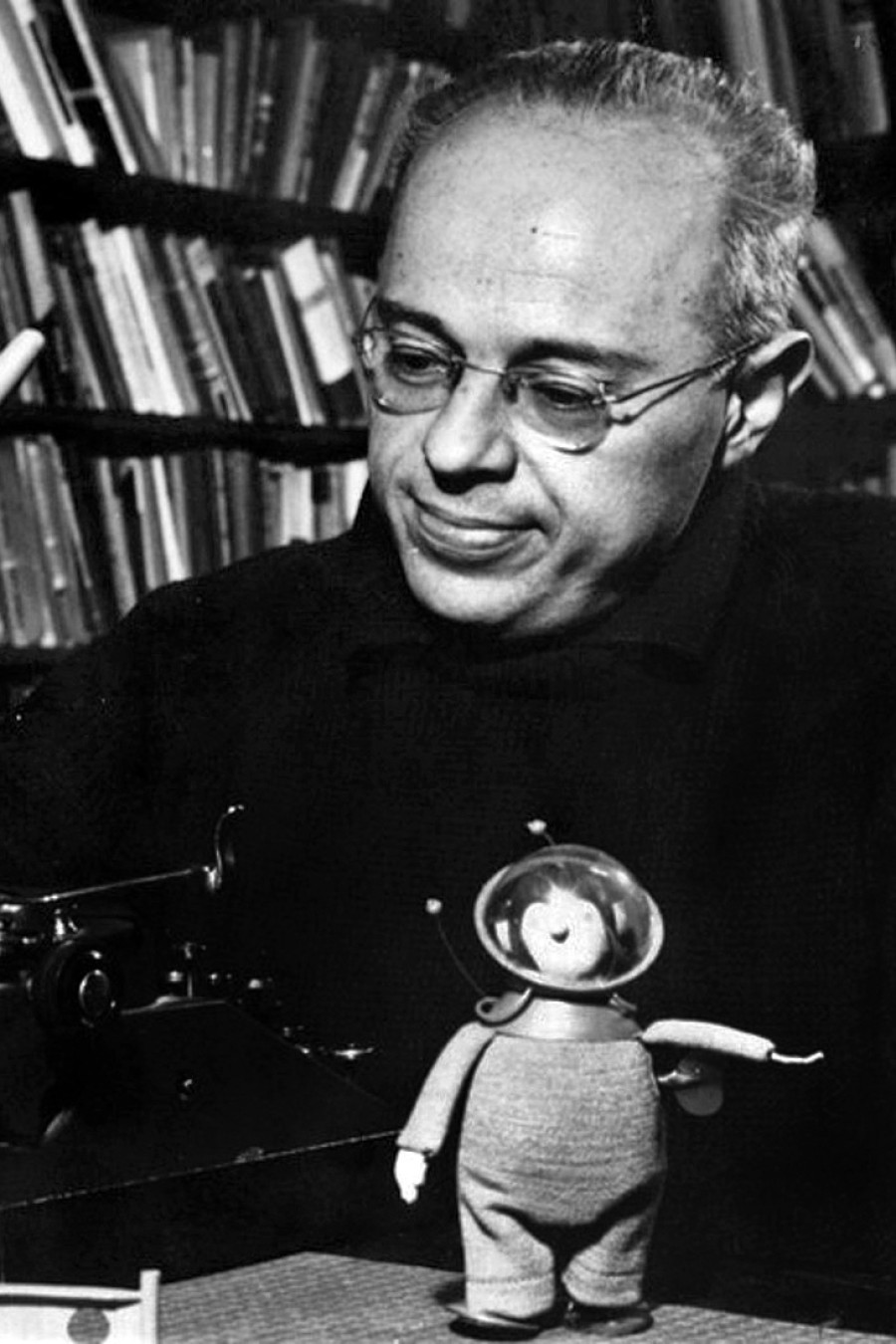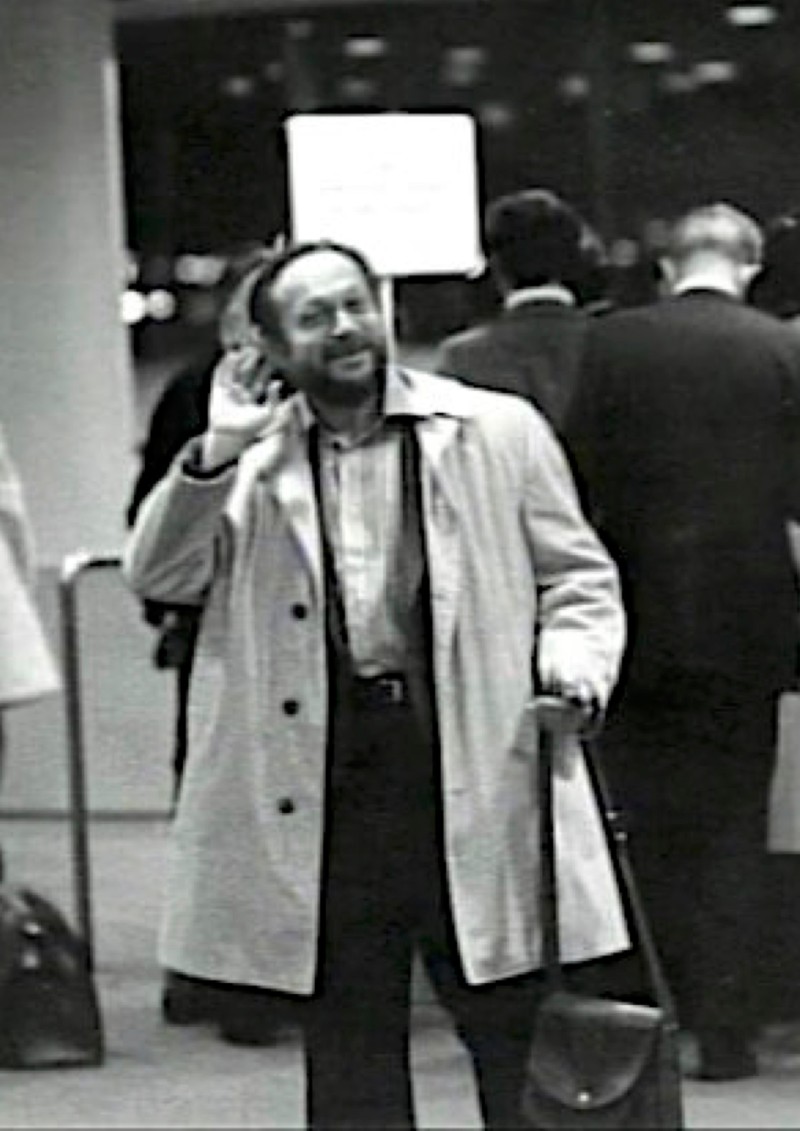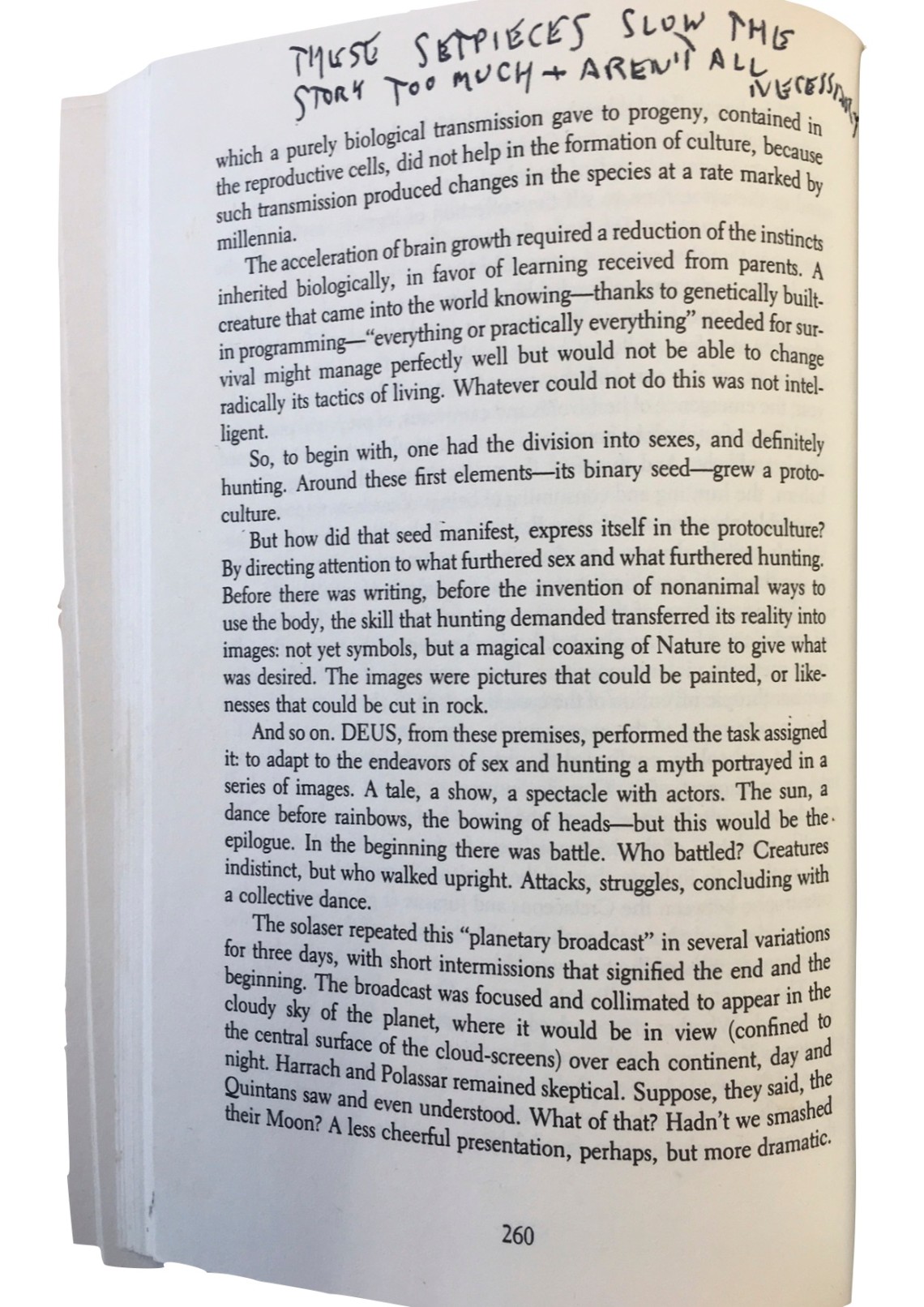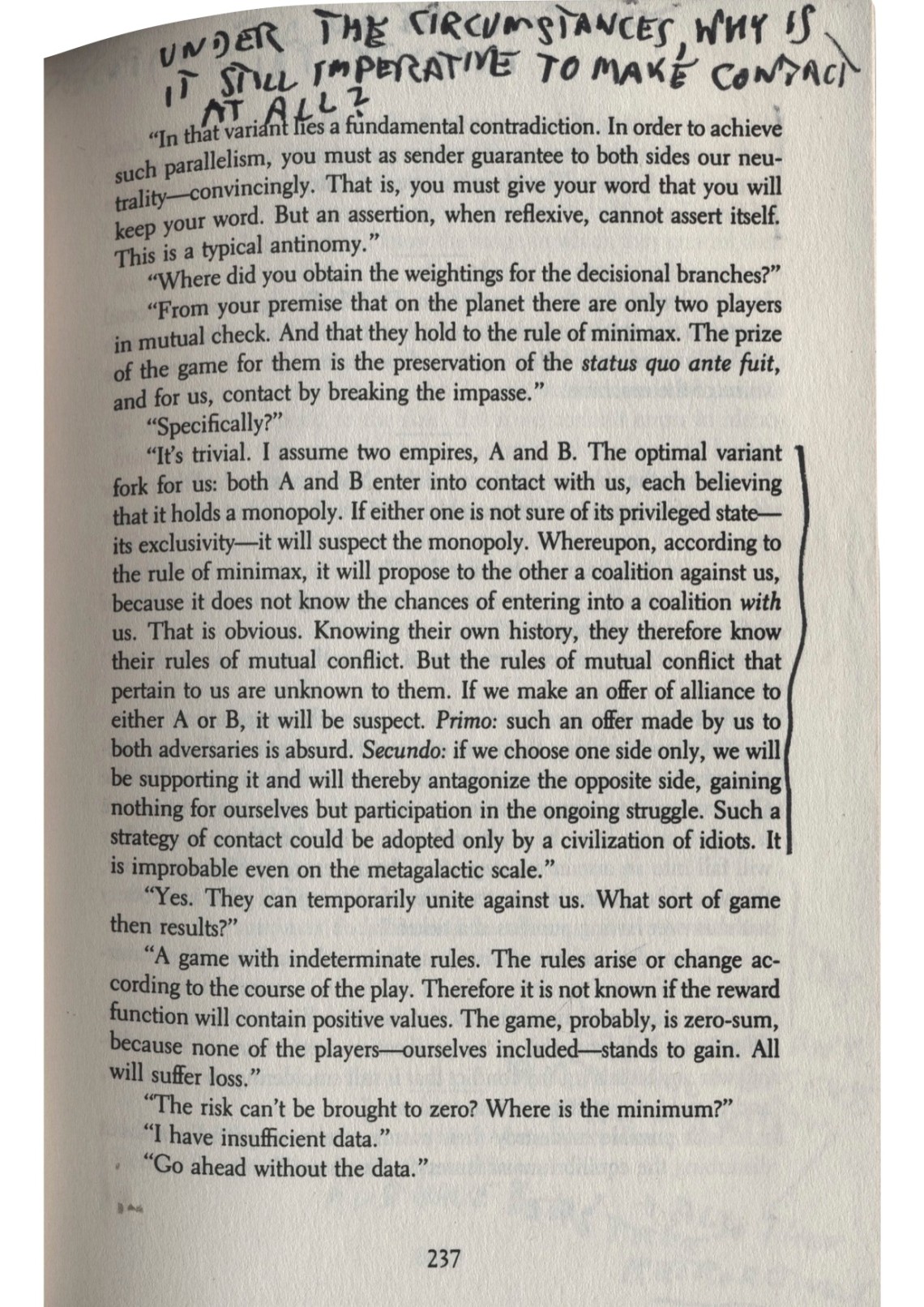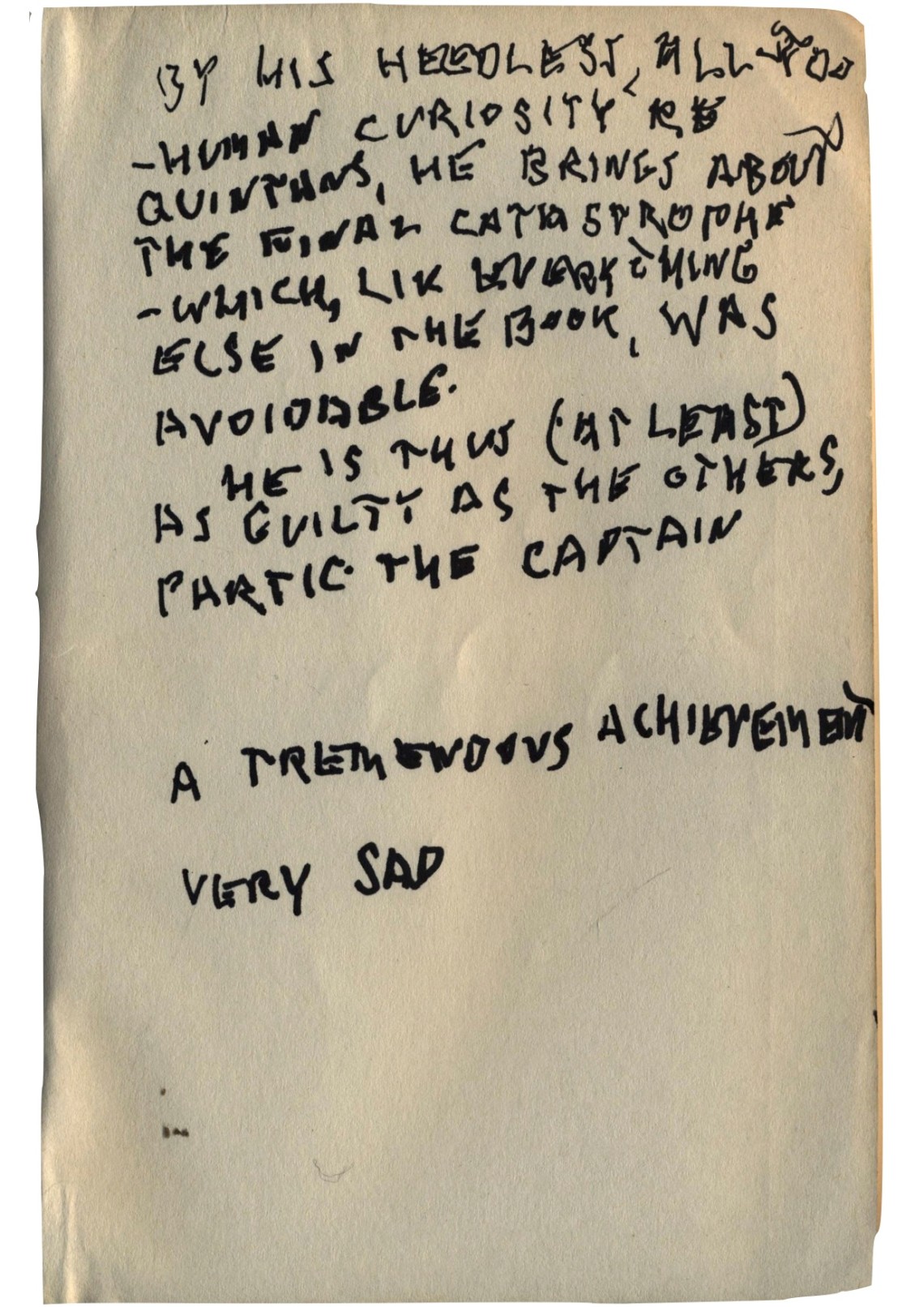Fiasco is a large-scale novel set in a far-advanced future of humanity, written by Lem in 1986 after his emigration from Poland. In this small case study of Amos Vogel's science fiction reading, we will successively include only those passages that he himself has highlighted, marked, and commented on. In this way, of course, the literary shape that Lem gives to his narrative remains largely in the dark, but all the brighter light is shed on those aspects of Lem's futurological reflections that most interested Vogel. So, let us take the paperback edition of the English translation of Stanislaw Lem's Fiasco, which was published in 1986 in New York by Harvest Books, extensively annotated, commented on, or, to put it casually, thoroughly graffitied by Vogel and also abundantly battered by the intensive reading.
Lem's narrative is packed with the description of futurological worlds, futuristic technospheres, and logical paradoxes of all kinds, but it would not be Lem if this absurd cosmos were not made the occasion for very human, ethical, and philosophical reflection. The first and decisive problem facing scientific reflection in Lem's narrative is the question of why the universe is actually silent.
"The Mystery of the Silent Universe had become a challenge to Earth's science." (p. 87)
